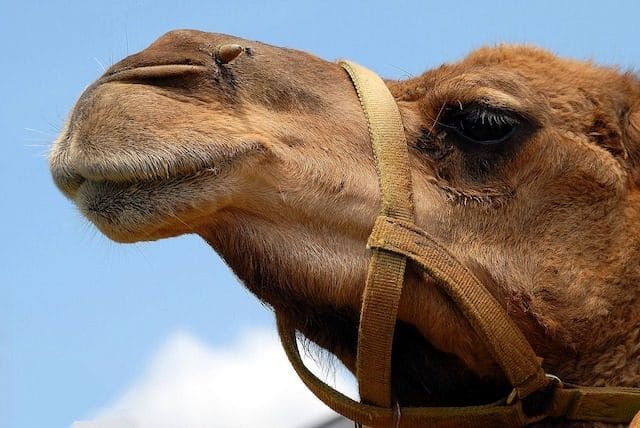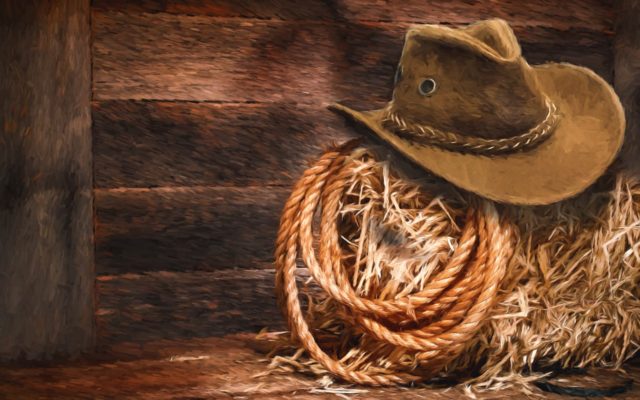Humans are very preoccupied with origins. Massive companies exist to trace your ancestry through DNA. When you meet new people, you like to know where they’re from. You want to know where the food you eat comes from, where people in positions of power were educated. We’ll even watch the origin of Spider-Man three separate times with three different actors. Part of this interest may stem from the fact that origins can be quite surprising sometimes, and even unexpected.
10. Hairless Sphynx Cats are Canadian

A sphynx cat is a hairless breed that you either love or hate. They can be an acquired taste, if nothing else. And given the fact that they have no hair and are named after one of the most iconic images in history, the Sphynx from Egypt, you’d be inclined to think they’re Egyptian cats. A hot, desert climate seems a reasonable place of origin for a cat with no way to keep itself warm, right? Turns out, the opposite is true.
Sphynx cats trace their origins to Toronto, Canada. This may be the exact opposite of Egypt. History’s first Sphinx was a little hairless Canadian named Prune, born in a litter of cats that were all fully hairy and otherwise unremarkable.
A breeder, recognizing the hairless trait as an expression of a recessive gene ending up breeding the little guy with his own mother because cat breeding gets weird sometimes. The result was even more hairless kittens. The potential of breeding the cats for the benefit of those with cat allergies made them desirable and a new breed was born.
9. Apples Come from Kazakhstan

When you want to describe something as truly American, you’ll hear the phrase “American as apple pie” pop up now and then. Apples are synonymous with American history. Just look at the tale of Johnny Appleseed. But if you go back far enough in time, you’ll find that apples are not actually American at all. Like many crops, they’ve done a lot of traveling around the world over the centuries.
The true origins of apples can be traced to Kazakhstan. A kind of crabapple called Malus sieversii native to the region was identified by Russian scientists as the progenitor of all modern apples. Apples were widely known in Kazakhstan and the capital, Alma Ata, translates to “full of apples.”
By the year 1500 BC, apple seeds had been spread all across Europe. Greeks, Romans and Etruscans cultivated them and they had become a ubiquitous part of everyday life. When the new world was discovered, French Jesuits brought apple seeds with them in the 16th century. Saplings were brought from England in 1620 and planted around Massachusetts. By 1644, over 90% of the state’s farms had apple orchards.
8. Chili Peppers Are from Mexico and Central America

Some people absolutely love spicy food, the hotter the better. They’ll eat curries from India or Thailand that can make a person break down in tears. But if you love spicy cuisine, those two nations produce some of the best and hottest. It’s ironic then that spicy peppers are not native to either nation.
Chile peppers were first domesticated in Central Mexico about 5,800 to 6,500 years ago. Columbus would have run across them when he discovered the New World. When they were brought back to Europe, they didn’t go over well. A Flemish physician wrote of how some people feared the peppers would burn their jaws for days.
It was around the same time that Europe was running in fear from spicy peppers that they made their way to Indonesia and India, in 1540 and 1542, respectively. Unlike their European neighbors, the people in these nations fell in love and soon adopted them into their local cuisine. By 2006, Guinness officially recognized the hottest pepper in the world, the Bhut Jolokia or ghost pepper, which hails from Northeast India.
7. Camels Originated in North America

Every country has animals that become synonymous with it. America has the bald eagle, China has the panda, Kenya has lions. And if you were to ask someone where they expect to find camels, they might tell you a place like Somalia. About half of the camels in the world can be found there, but they’re also well known throughout other African and Middle Eastern nations. Basically, any place that seems very hot and arid seems like a place to find camels. But it wasn’t always so.
Despite their current homes, camels are indigenous to North America. Fossil evidence shows that giant camels used to roam prehistoric Canada. You have to go back a good deal of time to find the beasts, and it’s estimated that they first appeared in North America around 45 million years back. They ranged from Alaska to Mexico and likely traveled in small herds of families.
These North American camels died out around 12,000 years ago. Early hunters and a changing climate did them in, while their cousins that had spread elsewhere in the world managed to thrive.
6. McDonalds Happy Meal Started in Guatemala

The McDonald’s Happy Meal is something most people in the world now recognize, the kids’ meal sold by McDonalds that has even been the subject of lawsuits because you can’t target kids in ads in certain parts of the world. But the original intention of the Happy Meal was just to make a kid’s size meal that little ones could finish when a normal meal was too big. And it was invented in Guatemala.
Yolanda Fernández de Cofiño opened the first Guatemalan McDonald’s in 1974. She saw that many kids were left with unfinished meals because they couldn’t power through a Big Mac, so she thought a smaller portion with a toy might be a fun idea.
She never asked permission to make the meal, but it proved popular and the head office made it an official menu item in 1979.
Now there is a wrinkle here as a man named Dick Brams claims he invented the Happy Meal in St. Louis. Except the guy he called to talk to about it, Bob Bernstein, says he had already invented it by that time, too. And the former VP of McDonald’s says they stole the idea from a competitor called Burger Chef.
When Dick Brams died, McDonald’s called him the “father of the Happy Meal.” But when a reporter for the Chicago Tribune called McDonalds to ask who invented it, they said it was Yolanda Fernández de Cofiño again who, by that time, was President of McDonalds Guatemala.
5. Tomatoes Come from Ecuador

Try to imagine Italian food without tomatoes. Sure, there are a number of great tomato-less dishes, but you’d lose a lot. The same with Spanish cuisine. Despite how ubiquitous the tomato is in a lot of European cuisine, they are not native to the continent. They originally come from Central and South America, growing wild in the Andes. They can be traced to Ecuador as far back as about 80,000 years ago. They made the move to Mexico around 500 BC and became a staple of cuisine there.
Columbus and Cortez would have brought the tomato back to Europe with them. The English didn’t take to tomatoes when they appeared in the 16th century, thinking them poisonous, but they thrived in the Mediterranean and by the 17th century were a large part of Spanish cuisine.
4. Cowboys Were Originally European and Mexican

As one of the younger countries in the world, American history is still relatively fresh in a lot of people’s minds and can be divided up into segments for easy study and understanding. One such segment that gets a lot of attention involves the Frontier and the push west. The days of the cowboy, an iconic image from America’s past. Interestingly enough, the cowboy itself is not really an American idea. It can be traced back to Europe, which, despite not having its own Wild West, established many of those cowboy tropes we consider uniquely American.
Horses had been extinct in North America for about 10,000 years. They were reintroduced by Spanish explorers. Spain actually had a long and impressive history with breeding horses. Also cattle breeding. The evolution of those two things followed the same path you see in old cowboy stories. Guys on horseback rustling cattle, going on cattle drives, raising them on the open plains. The whole thing was commonplace in Spain before any Europeans had even settled in America.
Hungary had the csiko horsemen, and there were Iberian and Andalusian cattlemen. But the original cowboys were arguably the vaqueros of Mexico who had the look and even the lingo from which American cowboys took most of their inspiration. These vaqueros came to California with a Jesuit priest named Kino, who was arguably the West’s first cattleman.
3. Hillbilly and Redneck Both Come from Scotland

The term hillbilly is a pretty commonplace term to mock certain people from the South who are considered uncultured. Redneck is often used in the same way. You’ve probably heard all the stereotypes because they’ve been around forever. The show Beverly Hillbillies debuted in 1962, so it’s a pretty ingrained idea at this point. Despite the fact that both of these terms seem to be used almost exclusively to mock a certain portion of the American population, they both come from Scotland.
In 1669, William of Orange was crowned king of England, Ireland and Scotland after a revolution against the prior king, James II. James fled and planned a counter invasion in Ireland. But the supporters of William were waiting and hiding in the hills. They were called billyboys at the time because they supported William, aka Billy. So the billies in the hills became hillbillies.
When Scottish and Irish immigrants came to America in the 1700s, many settled in the Appalachian mountains, the home of what is today the place where you’re most likely to hear people directing the term “hillbilly.”
Rednecks were supporters of the Presbyterian Church in Scotland. To stand out from others, they wore red scarves around their necks. Like their hillbilly cousins, the Presbyterian rednecks also settled parts of the south – the English had settled much of the north. The nickname redneck stuck, even for their ancestors.
2. The Word Soccer Comes from Britain

The debate between “soccer” and “football” can get heated. Ask most people in the world and they prefer the word “football.” But of course, America already has a sport called football, so they use “soccer.” Just a silly American affectation? Not exactly. Blame the British, because soccer is their word.
The distinction goes back to the 1880s when there was rugby football and association football. Rugby was cut down to rugger. Association football was cut to assoccer, and then just soccer. The name football was still more common, but the nickname soccer was tossed around now and then.
America had association football and gridiron football. But no one calls it gridiron football, they just called it football. So soccer became the default term for association football in America.
In time, soccer fell out of fashion in England because it was essentially and ironically too American.
1. Hawaiian Pizza was Invented in Canada

Few foods are more divisive than Hawaiian pizza. People either love or hate pineapple on a pizza. But however you feel, it’s worth knowing that the people of Hawaii are in no way responsible for it. Hawaiian pizza was created in Chatham, Ontario in the 1960s.
Pizza shop owner Sam Panapolous, who was Greek, had started serving pizza as a bit of a novelty. It was a new thing for most people in Canada at the time. He had “normal” toppings like pepperoni and bacon, but tried pineapple on a whim. There was no reason behind it. He just felt like giving it a spin to see what happened. For some years, his was the only restaurant where you could find it.
1 Comment
notable miss the humble Potato